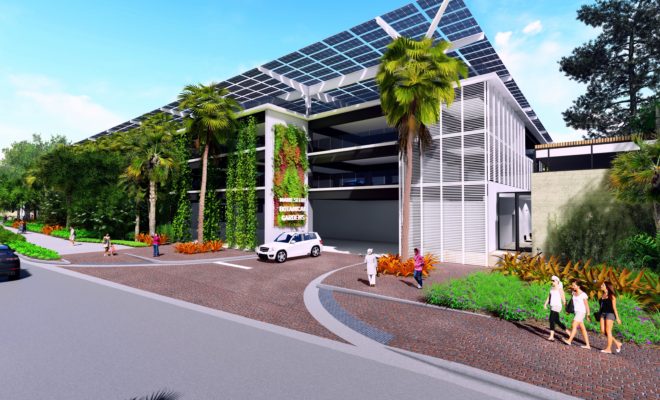
People & Business
Selby Gardens Announces New Compromise Master Site Plan
Marie Selby Botanical Gardens today released details of a new compromise Master Site Plan, including a number of significant changes made to address concerns.
After more than 40 hours of public input at hearings last fall and, more recently, at follow-up meetings with the community, three recurring concerns were voiced: the height of the parking structure and operation of a planned public restaurant being incongruous with the City’s comprehensive plan, noise from the planned restaurant, and the potential for increased traffic. Selby Gardens’ compromise Master Plan cuts the parking structure’s overall height by 40% and no longer seeks a change to the City’s comprehensive plan; reduces the size of the planned restaurant from 185 to a maximum of 110 seats; and limits the restaurant’s hours of operation to mirror the Gardens’ hours to cut down on noise and traffic from non-Gardens patrons.
“The Master Plan continues to be a vital chance to transform and realize the full potential of our beloved gardens, while also preserving our important history,” said Jennifer Rominiecki, president and CEO of Selby Gardens. “I’m thrilled to say we think even after downsizing the restaurant size and hours of operation, we believe the compromise Master Plan will allow us to sustain Selby Gardens for years to come.”
Parking and clean energy:
The compromise Master Plan includes a 40% reduction in the overall height of the building hosting a parking facility and retail space. The new structure, which will be called the Living Energy Access Facility (LEAF), will house a four-story parking facility and garden shop with a building height of 38.5 feet–comparable to nearby neighborhood buildings.
Most importantly, the LEAF will retain essential sustainability features from the initial Master Plan. A 50,000-square-foot solar panel array on its roof will provide one megawatt of power, while a storm water management system will clean water used onsite and then return it to Sarasota Bay. These features will make Selby Gardens the first net-positive botanical garden complex in the world, meaning more energy will be created than consumed.
These building systems will provide educational lessons about water quality, green technology and solar power to visitors. The structure will also have extensive plantings that showcase what Selby Gardens’ researchers study and protect.
The restaurant:
An on-site rooftop restaurant, originally proposed with 185 seats and open until 10 p.m., will now consist of a maximum of 110 seats, located on the ground floor adjacent to the LEAF building. In addition to minimizing the overall number of patrons, hours of operation would be limited to mirror the Gardens’ hours, addressing concerns of evening noise and traffic associated with restaurant patrons. Selby Gardens will own the restaurant with a significant percentage of net revenues reinvested to fund Selby Gardens’ mission.
Public benefit:
While lowering the overall height of the LEAF building will shift elements of the project, the compromise master plan retains all the key elements of public benefit and the following remain:
The LEAF building reduces surface parking, which allows for a significant increase in overall garden space; a robust multi-use recreational trail for the community; and Selby Gardens will plan, amenitize, and maintain a portion of the City of Sarasota’s Bayfront public park as a gift to the community. Selby Gardens’ primary entrance will remain on U.S. 41 coupled with proposed physical and timing improvements to the U.S. 41 and Orange Ave. intersection. A partnership among Selby Gardens, CareerEdge Funders Collaborative, and Gulf Coast Builders Exchange will provide training in high-demand trades to City of Sarasota residents with hiring priority for jobs created by the project given to contractors that employ the trainees. A brand new $250,000 gardens-wide sound mitigation system has already been installed to integrate, monitor and regulate sound throughout the Gardens.
Critically important to the world of plant science, the hurricane resilient Plant Research Center, which will house a new library, laboratory, and herbarium will become a reality.
Timeline:
The master plan will remain a three-phase project. To date, Selby Garden trustees Jean Weidner Goldstein, Cornelia Matson and Pauline Wamsler have spearheaded the fundraising campaign, raising more than 80 percent of the funds needed to implement phase one. The three-phase plan is projected to take 10 years and cost $92 million – $72 million for construction and $20 million for endowment and operations. Of the $42.5 million needed to implement the first phase of the master site plan, $35 million has been raised.
The first phase of the master plan includes the Welcome Center, Plant Research Center, LEAF building, the multi-use recreation trail around the perimeter of Selby Gardens’ property, increased public access, and the historical restorations of Palm Avenue and the Selby House (already completed in 2019).
Later phases of the compromise master plan include a new greenhouse complex, a learning pavilion and improved, circuitous walking routes throughout the property as well as improvements to the historic Payne Mansion, home to the Museum of Botany & the Arts.
The compromise master site plan has been guided by the international landscape architecture studio OLIN, building architecture firm Overland Partners and civil engineer Kimley Horn. Willis Smith Construction will serve as the construction manager for the project.



You must be logged in to post a comment Login